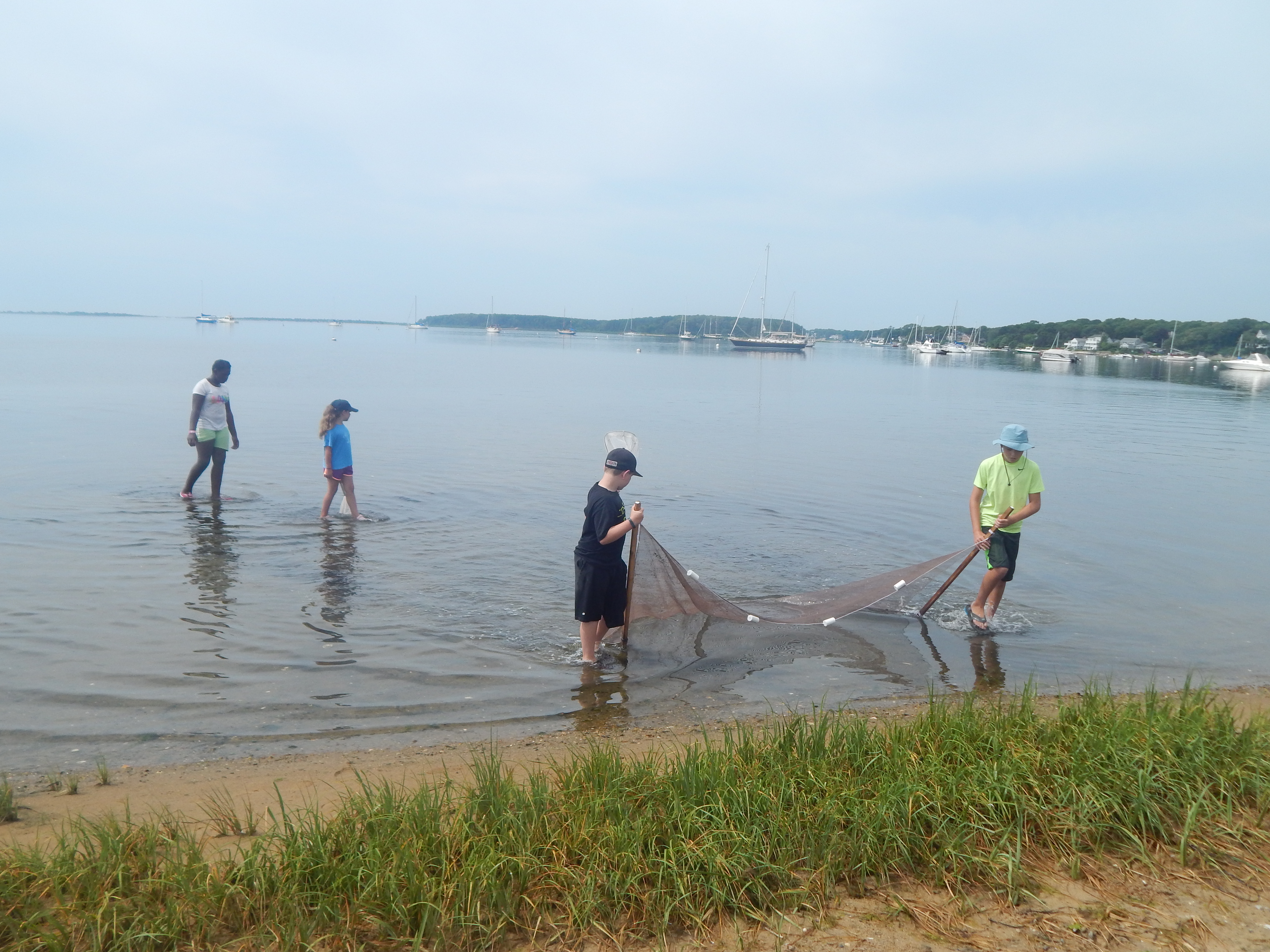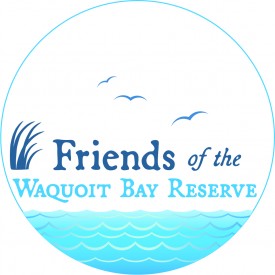
Teachers: Introduction and Overview for Bringing Wetlands to Market Curriculum
This site contains a high school STEM curriculum related to the “Bringing Wetlands to Market” project. The “Bringing Wetlands to Market” research studies located in Falmouth and Mashpee on Cape Cod, Massachusetts, examine the relationship between salt marshes, climate change, nitrogen pollution, and the economic value of salt marshes as carbon sinks. This curriculum module, which is linked to the Next Generation Science Standards, introduces many different aspects of this exciting project and provides teaching ideas and activities for sharing it with teachers and students.
Project Introduction
Money does not grow on trees, but it could be growing in our coastal salt marshes and sea grass beds. A team of researchers is working at Waquoit Bay Research Reserve on Cape Cod in Massachusetts on the “Bringing Wetlands to Market” project to study the connections between coastal wetlands, carbon dioxide uptake and storage, and the global carbon trading economy. Wetlands have the potential to serve as valuable assets in carbon trading markets – but only if we protect them, and don’t dig up the treasure!
Carbon dioxide is a greenhouse gas that increases global warming by trapping heat in the atmosphere. Recent research indicates that coastal wetlands might capture and store carbon, including carbon dioxide, at rates three to five times greater than forest systems do. They also have the capacity to store carbon over long time periods. That means that they could be extremely valuable as carbon offset areas, which are traded on global markets.
However, pollution from septic systems, stormwater, and airborne compounds can reduce or wipe out a wetland’s ability to store carbon. Salt marshes, seagrass beds, and mangrove communities could be of tremendous value to the economy of their coastal communities, but only if they are healthy and functioning well ecologically.
Scientists in the “Bringing Wetlands to Market” project are examining the relationship between salt marshes, climate change, nitrogen pollution, and the economic value of salt marshes as carbon sinks. Through science, modeling, and broad stakeholder input, the research team seeks to generate information and design tools that coastal decision makers can use to manage nitrogen pollution, design effective wetlands protection and restoration projects, and create economic incentives to reduce greenhouse gas.
For teachers and students, this unit offers an authentic context for studies of the carbon cycle, ecosystem functions, the process of science, the engineering and technology design process, calculating economic value for natural resources, and student field studies and stewardship projects.
Field & Online Activities: Data from the Bringing Wetlands to Market
Teaching Notes: Getting to the Core of the Matter
Student Pages: Getting to the Core of the Matter
Teaching Notes: Modeling Blue Carbon in Salt Marshes
Student Pages: Modeling Blue Carbon in Salt Marshes
Preparation
Before beginning this unit, students should be able to
• Explain what an estuary is
• Explain what a watershed is
• Give a general description of the National Estuarine Research Reserve System
If your students are unfamiliar with estuaries and watersheds, the following lessons provide useful background for this unit.
Lessons and background on estuaries and watersheds
You can find many lessons on estuaries and watersheds on NOAA’s estuary education website: https://coast.noaa.gov/estuaries/
An interactive map of the National Estuarine Research Reserves is at: https://coast.noaa.gov/nerrs/
Estuary Principles and Concepts: https://waquoitbayreserve.org/research-monitoring/salt-marsh-carbon-project/phase1/teachers/
Bringing Wetlands to Market Project Main Page
Bringing Wetlands to Market: Expanding Blue Carbon Implementation Fact Sheet:
https://waquoitbayreserve.org/wp-content/uploads/Phase-2_Expanding-Blue-CarbonFact-Sheet_Final.pdf
Curriculum
1.0 Introduction – Wetlands and Carbon
1.1 Carbon Walk
1.2 Photosynthesis and Carbon Storage in Coastal Wetlands
1.3 Wetland Ecological Services
2.0 Introduction – Research Project
2.1 Process of Science
2.2 Water Quality Variability and Choosing a Study Site
2.3 Engineering Design Challenge
3.0 Introduction – Economics and Blue Carbon Simulation
3.1 Valuing Your Wetland
3.2 Blue Carbon Trading Simulation
4.0 Introduction – Pressures on Wetlands and Stewardship
4.1 Sea Level Rise
4.2 Nitrogen and Coastal Wetlands
4.3 Stewardship Projects
Adopt a Wetland Stewardship Project and Field Study (word doc)
Adopt a Wetland Stewardship Project and Field Study (pdf)
Adopt a Wetland Student Designed Studies_Parameters and Carbon Content of Plants
Acknowledgements:
This curriculum was developed with partial funding from the NERRs Science Collaborative and the help of many individuals. The BWM curriculum development team consisted of Tom Gaskill, Cait Goodwin, and Jenna Kulluson from South Slough NERR; Joan Muller, Waquoit Bay NERR, and Pat Harcourt, consultant. Pat wrote the curriculum with guidance, input, and review by the other curriculum development team members. Initial topics were chosen to match with the Next Generation Science Standards and the BWM project and narrowed down by a survey of teachers in Oregon and Massachusetts. Members of the BWM research team, especially staff at Waquoit Bay NERR, gave input and reviewed drafts as did members of the Waquoit Bay Reserve Teacher Advisory Committee. We are especially indebted to the teachers who tried out activities from the BWM curriculum at TOTE (Teachers on the Estuary) workshops in Oregon and Massachusetts during the summer of 2013, piloted them with their students, attended focus groups and responded to on-line surveys during the fall to give feedback which was incorporated into this version of the curriculum.
Comments? Suggestions? Corrections?
We welcome feedback. Contact Joan Muller, Education Coordinator at Waquoit Bay National Estuarine Research Reserve joan.muller@state.ma.us with any suggestions or questions.



